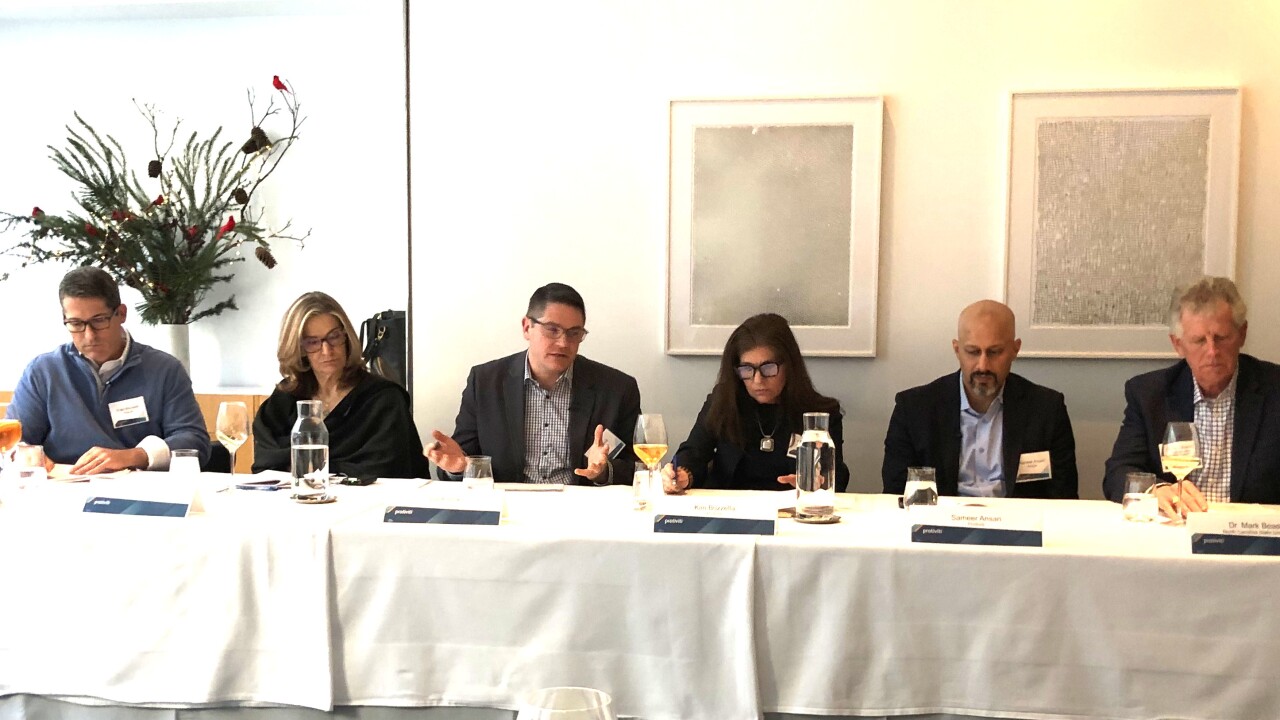The Internal Revenue Service and the Treasury Department are proposing to get rid of the "domestic corporation look-through rule" for determining whether a real estate investment trust in the U.S. is controlled by foreign investors.
The IRS and the Treasury issued a
The Treasury and the IRS published proposed regulations in December 2022 setting rules for determining whether the stock of a qualified investment entity is considered "held directly or indirectly" by foreign persons for purposes of defining a domestically controlled QIE.
The 2022 proposed regulations defined stock in a QIE that is held "indirectly" by taking into account stock of the QIE held through certain entities under a limited "look-through" approach. Under that approach, only a "non-look-through person" is treated as holding directly or indirectly the stock of a QIE, and the stock of a QIE held by or through one or more intervening "look-through persons" is treated as held proportionately by the look-through person's ultimate owners who are non-look-through persons.
The 2022 proposed regs generally treated a "domestic C corporation" — defined as any domestic corporation other than a RIC, REIT or an S corporation — as a non-look-through person. However, the 2022 proposed regulations treated certain "non-publicly traded domestic C corporations" as look-through persons if the foreign investors held a 25% or greater interest (by value) in the stock of the corporation. This is known as the "domestic corporation look-through rule."
In April 2024, the Treasury and the IRS finalized the 2022 proposed regs, retaining the general approach and structure of the 2022 proposals with some changes. In particular, under the 2024 final regulations the domestic corporation look-through rule applies if foreign persons hold more than a 50% interest (by value) in the stock of the corporation. The 2024 final regs include a transition rule that exempts existing QIEs from the application of the domestic corporation look-through rule for a 10-year period, provided there isn't a significant change in the U.S. real property interests held by the QIE or in the QIE's ownership.
After the 2024 final regs were published, the Treasury and the IRS heard feedback from taxpayers recommending the withdrawal of the domestic corporation look-through rule, focusing on the practical difficulty of tracing upstream ownership, often without access to reliable data, resulting in legal uncertainty, operational complexity, and potentially chilling effects on investment in U.S. real estate. The Treasury and the IRS now say they share these concerns.
Taxpayers also argued that the domestic corporation look-through rule is inconsistent with the statute and conflicts with congressional intent. They noted that within the domestically controlled QIE provisions, Section 897(h)(4)(B) doesn't contain explicit corporate look-through rules and that Congress enacted rules in 2015 providing for look-through treatment for certain corporate owners of QIEs, but only in the specific circumstances described in Section 897(h)(4)(E). They argued that the presence of the look-through rules in this section and others indicates that the absence of a similar rule was intentional, and that interpreting them to include corporate look-through rules would render them superfluous.
The recommendations emphasized that the term "indirectly" can have different meanings in the Tax Code aside from the look-through treatment of domestic corporations. They further argued that the interests held by a domestic corporation are subject to U.S. corporate income tax, and therefore the objective of Section 897 is satisfied without looking through a domestic corporation.
After hearing the feedback, the Treasury and the IRS further considered whether the interpretation of "indirectly" reflected in the domestic corporation look-through rule is consistent with the statutory text and purpose of the DC-QIE exception, which Congress intended to be available for QIEs that are controlled by United States persons. Upon further consideration, the Treasury and the IRS have taken the view that imposing look-through treatment under the domestic corporation look-through rule with respect to an entity that's subject to U.S. taxation based on a strict 50% foreign ownership threshold isn't the right construction that should be given to the text.
Accordingly, the latest set of proposed regulations would remove the domestic corporation look-through rule and treat all domestic C corporations as non-look-through persons in determining whether a QIE is domestically controlled. The proposed regulations would also provide for various conforming revisions to Section 1.897-1(c)(3) that would now be needed due to the removal of the domestic corporation look-through rule.






